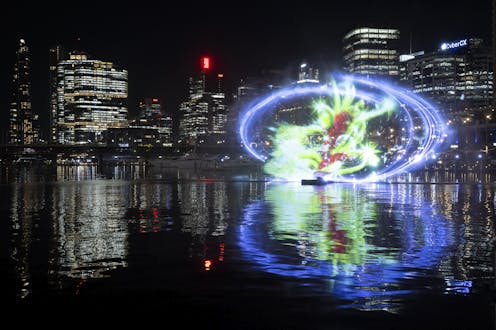
It’s the year 2008, and some members of the International Association of Lighting Designers are gathered in a boardroom in North Sydney, myself included. My colleagues Mary-Anne Kyriakou (who would later be Vivid’s inaugural festival director) and Michael Day are sharing a vision of what’s almost unthinkable at the time.
They paint a picture of a light festival in which the winter of Sydney has become vibrant in colour: buildings are illuminated, streets are alive with creative light installations and the crowds walk about in awe. It is a vision that would soon become Vivid Sydney.
This year’s program promises to impress once again with a diverse range of content including Julia Gutman’s first ever animation work, Echo, a story of wonder, vulnerability and strength displayed on the shells of the Sydney Opera House.
Installations such as Stateless and Humanity by Sinclair Park touch on world issues in ways that offer both delight and prompt reflection.
We also see First Nations artist Tori-Jay Mordey’s work, Faces of Change, on the pylons of Sydney Harbour Bridge. It explores, among other themes, humanity’s connection to nature and the threat that rising sea levels pose to the Torres Strait Islands.
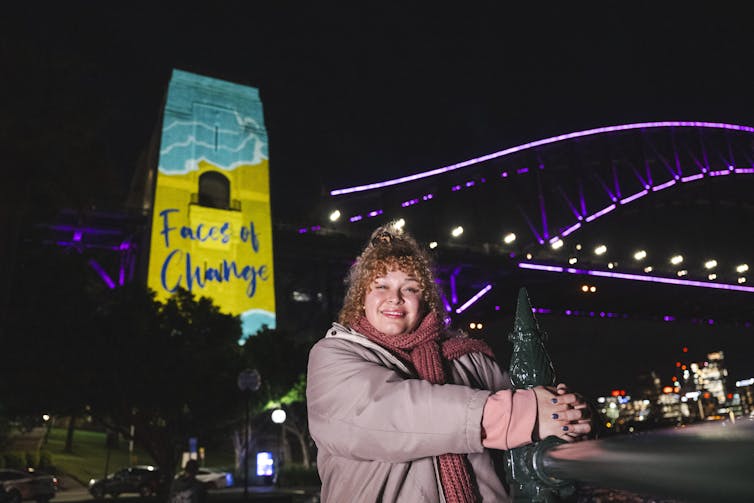
On the lighter side, there’s a Tekno Train you can have a rave on, and some parties held in a 100-year-old heritage substation.
It’s my hope Vivid Sydney will continue to captivate locals and visitors this year, and for the years to come. But while we look forward to these experiences, let’s also look at the challenges to overcome.
When it all began
The inaugural Smart Light Sydney event was staged in May 2009, laying the foundation for Vivid. The shells of the Sydney Opera House became a canvas for the festival’s first headline projection by Brian Eno.
Several small and large installations were staged across Circular Quay and the Rocks, with various landmark buildings lit up. A number of light artists and designers participated with passion, somewhat tight budgets, and relatively modest works compared to today’s.
Smart Light Sydney offered glimpses of what could be possible in the future. Support from the government and private sector soon followed, and the stage was set for the future of Vivid.
Throughout the 2010s, Vivid inspired a number of smaller and regional towns in New South Wales and beyond to experiment with how lighting could become a spectacle and contribute to their own nightscapes.
In just a few years, Vivid evolved from a modest initiative into a globally recognised celebration of light, music and ideas – positioning itself next to longer-running festivals such as Lyon’s famous Fête des Lumières, Montréal en Lumière and the Berlin Festival of Lights.
A balancing act
The success of such a massive festival will, of course, come with challenges. Vivid, for instance, must grapple with balancing genuine artistic endeavour with the objective of attracting the masses.
This is a fine and delicate balance. If tipped, Vivid could fall into the trap of prioritising spectacle over substance. Some critics already contend that the festival emphasises grandiosity in a way that overshadows creative pursuit.
In recent years, the public and politicians have also criticised key light installations being ticketed, including this year’s Lightscape in the Botanic Gardens and Dark Spectrum in the Wynyard Tunnels.
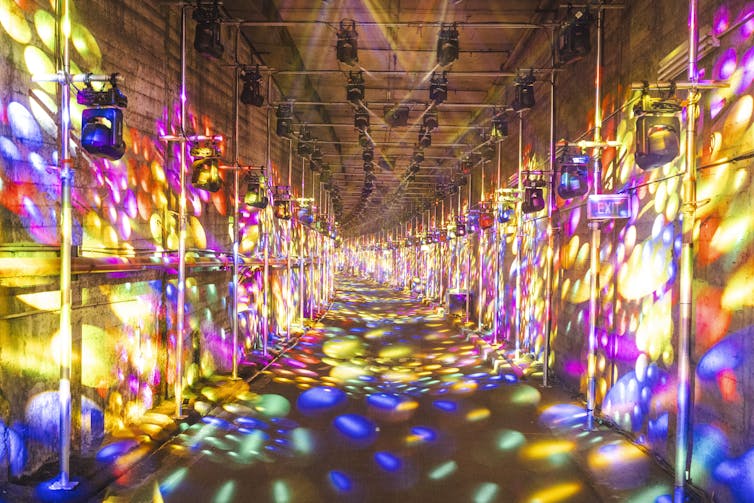
Perhaps ticketing these offerings helps kerb visitor numbers so they can remain enjoyable (albeit for a smaller number of people). Or it may provide the revenue needed for the festival to deliver more innovative and valuable experiences.
Nonetheless, the decision has sparked debate over the commercialisation of what started as a cultural community event. Numerous corporate-sponsored installations have also now become centrepieces of the festival.
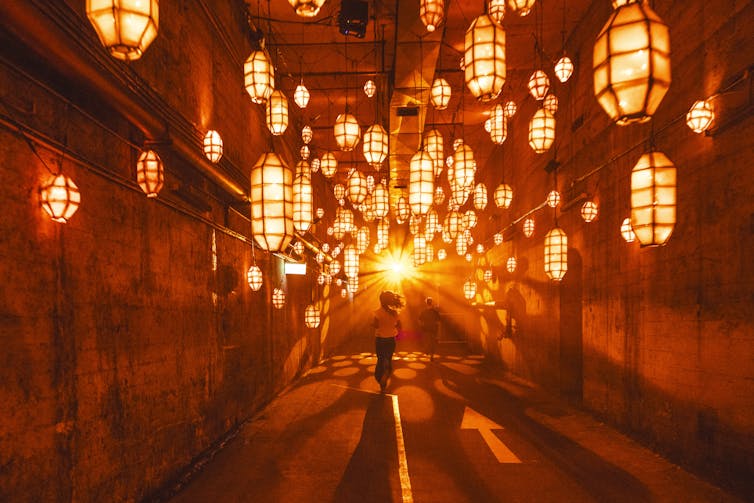
Beyond this is a growing challenge for creatives to build on what has already been done. The installations and projections this year again showcase great examples of what can be achieved through the creative use of light and technology. As the festival matures, however, people’s expectations also grow.

Sustainability and logistical challenges
Environmental impact and sustainability are key considerations when thinking about Vivid’s future. The festival’s website details actions it has taken to deliver on this front, which have included partly offsetting its carbon footprint, using more renewable power, installing taps to reduce plastic landfill, encouraging public transport and going paper-free when possible.
Nonetheless, environmental issues remain intrinsic to an event of this scale. The festival’s light pollution and reliance on large-scale energy consumption are points of contention, especially as awareness of these issues grows. Among all the environmental challenges the festival faces, using dark-sky friendly lighting is perhaps one of the most tricky.
Another challenge is that the festival’s growth has somewhat strained local infrastructure, leading to overcrowded public spaces and transport systems. During the festival weeks, portaloos, barricades and other temporary infrastructure also decorate the city.
While Vivid puts in a notable effort into remaining accessible and inclusive for all, the sheer number of attendees (supposedly 3.4 million last year) means managing this size comes with many hurdles.
What the future may hold
These challenges aren’t unique to Vivid Sydney. They are faced by many similar events. In each context, there is nuance and also unique opportunities.
Vivid could play a profound, flagship role in showcasing Australia’s design culture to its own people and to the world. This is a culture characterised by kindness, fairness, diversity, creativity and a commitment to innovation and sustainability.
Perhaps Vivid’s future doesn’t rely on getting bigger and brighter, but on the finer aspects of its content. From embracing Indigenous wisdom, to connecting to nature, to highlighting world-class architecture and lighting design – Vivid has the potential to reinvent itself year on year.
But it will need to continue to deliver spectacle with subtlety to achieve this, and tell stories that touch people on a deeper level. Perhaps, unconventionally, it makes sense to embrace the darkness as much as the light.
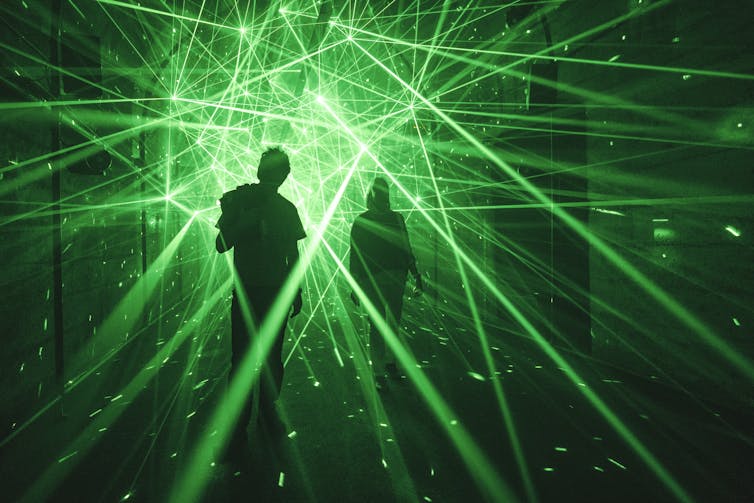
Dr Emrah Baki Ulas has participated in Vivid Sydney since its beginnings and exhibited several installations over the years. He is an Associate Professor of Practice at the University of Sydney and Co-leads Lighting Design at Steensen Varming.
This article was originally published on The Conversation. Read the original article.







